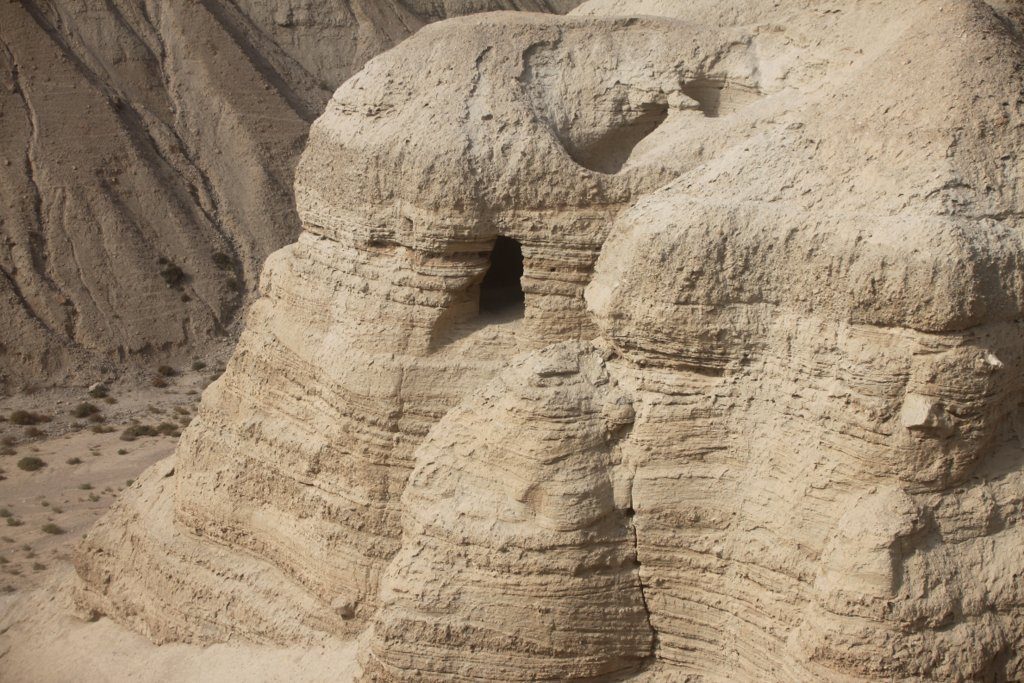 A paper presented last the Caves of Qumran 2014 conference at Lugano, Switzerland, by Gregory L. Doudna argues that
A paper presented last the Caves of Qumran 2014 conference at Lugano, Switzerland, by Gregory L. Doudna argues that
the traditional dating of the scroll deposits of the caves of Qumran to as late as the time of the First Revolt [66-70 CE] is supported by neither evidence nor plausibility. (Doudna 2017, p.238)
Doudna’s paper makes its case through the following steps:
- All historical references within the Dead Sea Scrolls pertain to the second and first centuries BCE; there are no allusions to any persons or events after Herod’s taking of Jerusalem in 38 BCE.
- The common view that on the basis of palaeography that the scrolls date up to the time of the first Jewish revolt against Rome has been based on circularity and flawed assumptions.
- Flawed assumptions about the contemporaneity of two classes of phenomena: “scroll jars and scroll deposits on the one hand, and first-century CE refugees or fugitives’ fleeting use of caves on the other.”
- Jars of the type that contained scrolls and palaeographic dates “provide no basis for confidence that those texts were first century CE.”
- Biblical texts found at sites other than Qumran, between Herod and the Jewish revolt, all contain carefully copied exact-Masoretic text type (i.e. were carefully and exactly copied in agreement with the basis of our Old Testament books) yet the Qumran biblical texts are varied in their copying (i.e. they followed no standard text). The simplest explanation is that the Qumran texts represent a pre-Herodian time when the text was not standardized.
That last (fifth) point surprised this amateur. I had not been aware of the evidence that the Masoretic (Hebrew) text of the “Old Testament” was stabilised so early. As Doudna remarks, on the assumption that the Gospel of Matthew was composed in the first century,
Once this is realised, no longer will the saying of Matt. 5:18 referring to iotas and keraias in the writing of scribes scrupulously copying the books of Moses with letter-perfect accuracy, and, alluding to the decorative keraias of the most developed formal hands, be regarded as anachronistic. Matt. 5:18 may become recognised as a realistic allusion to scribal practice and ideology before the destruction of the temple, yet postdating the latest texts of Qumran. (Doudna, p. 246)
Doudna suggests that the I would like to revisit some of my recent thoughts and posts arising from Eva Mroczek’s The Literary Imagination in Jewish Antiquity to consider whether this data has implications for some aspects of just how loose were the concepts of “sacred scriptures” and “canon” in the Second Temple era.
In this post I would like to take time to grasp Doudna’s first point about the historical references and allusions in the scrolls all pertaining to the pre-Christian era. With new ideas I’m a slow and painstaking learner so to help me grasp the point I followed up the following in Doudna’s paper:
A 2003 study of Michael Wise remains the most comprehensive attempt to inventory the historical allusions in the Qumran texts. Wise counted what he defined as “first-order” allusions, and not “second order” allusions (allusions that depend on the correctness of a prior allusion identification), which Wise suggested would have increased — perhaps doubled — the numbers if that were done. Wise counted 6 allusions in the second century BCE, rising dramatically to 25 in the first century BCE ending at 37 BCE. Then, 0 for the first century CE, 0 for second century CE, etc. Other studies have found this same pattern of distribution. (Doudna, p. 239)
Off to JSTOR to locate Wise’s article, then: “Dating the Teacher of Righteousness and the Floruit of his Movement,” JBL 122 (2003): 53-87.
Wise demonstrates the history of uncertain and contradictory results from paleographic dating and writes:
Paleographic dating is imprecise because it is inherently subjective. (Wise, p. 57)
There’s an entire post there just to draw out the substance of that claim. Wise further points out the evidence against the once popular idea that there was a single community of scribes responsible for the copying of all of the scrolls.
The presence of hundreds of different hands seems inexplicable unless the majority of the scrolls originated elsewhere than at Qumran. (Wise, p. 59)
The following table is a précis of Wise’s more detailed data: Continue reading “Dead Sea Scrolls — All Well Before Christ and the First Jewish War”
